2018: An exciting and exploratory year for the Van Eck Forests
It’s been an exciting, exploring, and productive year thus far for the van Eck forests, our living laboratories on 9,400 acres of highly productive forest in California and Oregon. These forests are a proving ground for demonstrating the synergy of ecologic and economic gains, benefitting wildlife, water and climate, implementing cutting edge forest management and building the asset and delivering solid financial returns. We were thrilled this year with the verdict of a special audit of our forest management on the two properties by SCS Global Services with Robert Hrubes, PhD and Walter Marks, PhD. Their conclusion was that our work was of a “highly exemplary nature” with “high caliber of professional personnel.” This affirmation of our work was a great compliment (and being in the field with them was also a lot of fun)!
In California, we operated in the Lindsay Tract for the third of three planned years, gaining an increased harvest yield of 1.5MMBF from this extremely well stocked set forest. The harvest improved spacing and structure, opening more growing room for larger trees to expand. (See harvest photos below.) With a target of restoring many trees over 4 foot in diameter at breast height, this is a key management objective.
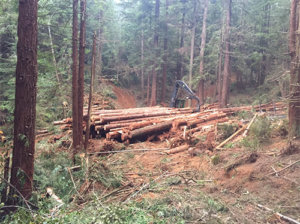
Logs decked for transport in 2018 harvest
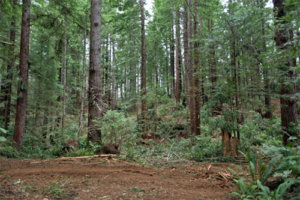
Post-harvest stand, improved spacing and light
We also did extensive restoration work for fish, specifically to benefit steelhead and Coho salmon. On Squaw Creek we replaced undersized culverts, replacing them with 8 foot diameter ones to accommodate the increasing incidence of major “precipitation events” happening with climate change. The storms formerly known as “50 or 100” year events are coming within a decade now, and accommodating these high flows reduces sediment and improves spawning and rearing habitat for these vulnerable fish. In 2019, we plan to restore an historic “oxbow” of the Lindsay Creek, improving rearing habitat for the fish. Lindsay Creek is one of the most important salmon tributaries for the Mad River, which is key to the Coho’s survival. Our work is part of a larger cooperative effort in California’s north coast, having synergistic benefits of a more comprehensive set of restoration actions.
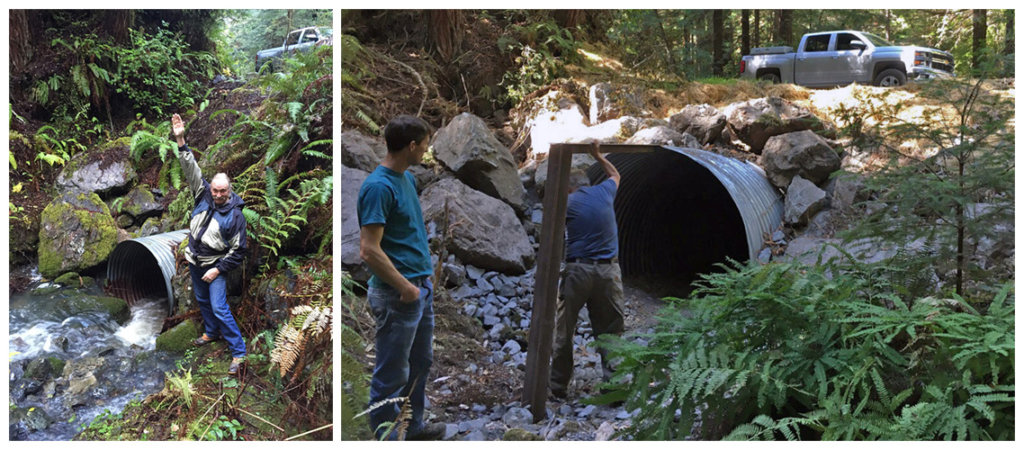
Before and after: Squaw Creek culverts; now ready for the “big ones”!
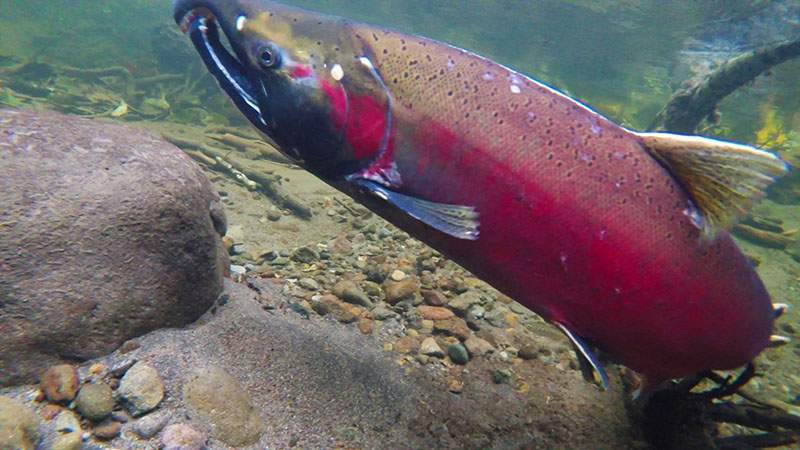
Coho salmon: the van Eck forest has some good rearing ponds that will soon be even better.
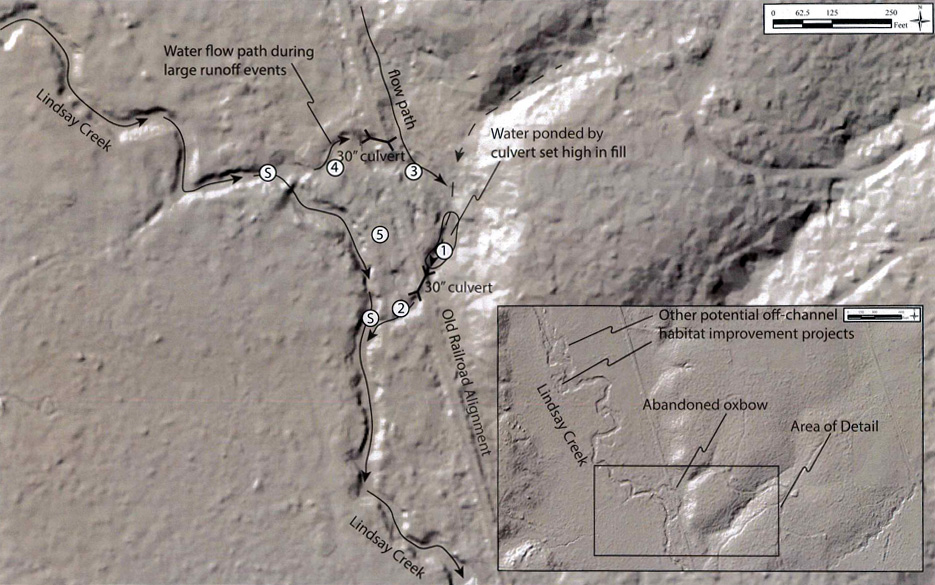
This map shows where we will restore Lindsay Creek’s natural stream flow to improve fish habitat
In Oregon, we have been focusing on improving the health and stocking of the many young plantations that characterized the property as we began managing it. Young, homogeneous plantations are the most vulnerable ones to the stresses of climate change, and as we have longer hotter summers that these trees are not adapted too, restoring mare natural resilience is even more important. Fortunately, this year had excellent prices for the small diameter materials that come from the thinnings and variable retention harvests that help restore more natural spacing and stocking to these stands, so there was a synergy of ecologic and economic outcomes early in the year.
We also undertook the first inventory of the wildlife on the van Eck forests in Oregon! We’ve found not only a lot of species, but some rare species along with many more common ones to the Central Oregon Coast. We also installed wildlife cameras to help document larger mammal use, catching some wonderful bear, mountain lion and elk strolling down our forest roads. Amongst the rarer species documented were the imperiled Marbled Murrelet and the Willow Flycatcher. Murrelet need larger trees with bigger limbs to nest on and with good canopy cover to protect them from predatory corvids (crows, ravens, and jays). They often nest close to or along riparian areas so they can fly straight out to sea where they fish. Management on the van Eck is restoring just this kind of habitat.
The Willow Flycatcher also depends on streamside habitats, (especially willows, of course!). These flycatchers are in trouble because so many riparian areas have lost their streamside vegetation, amongst other factors. On the van Eck, with grants from the Oregon Watershed Enhancement Board and the NRCS, we’ve been taking out non-native brambles and replanting with native willow and conifer to help these and other species, as well as stabilize banks and reduce erosion and improving water quality.
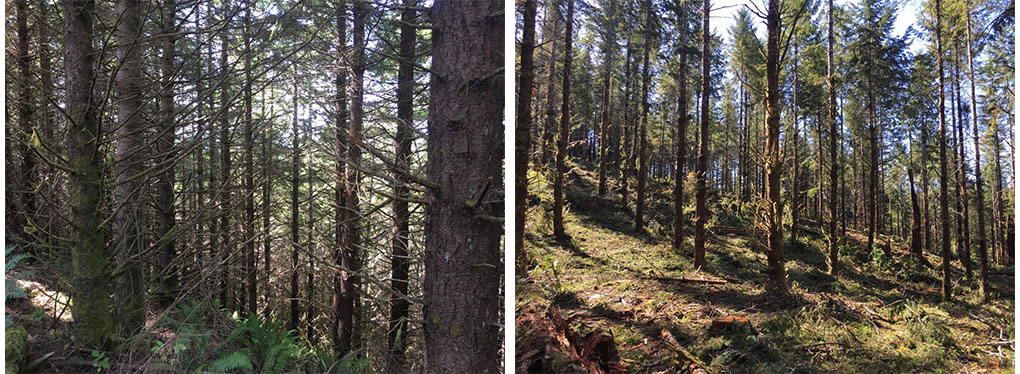
Pre- and post-harvest stands showing improved stand structure and spacing
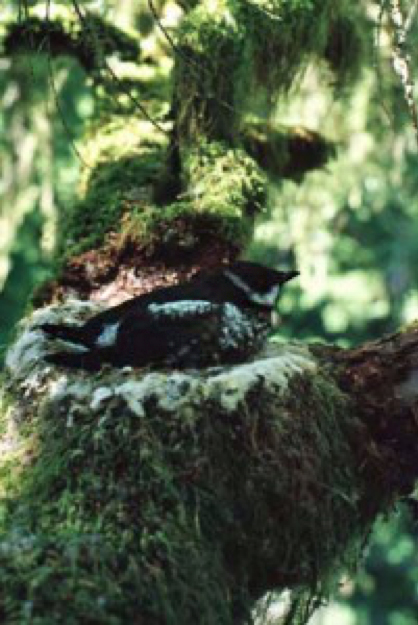
The marbled murrelet illustrates just how “cryptic” a species can be—it’s hard to spot them! They are most often detected by their song as they fly out to sea early (really early) in the morning or return at night. Our survey documented them in this way at two van Eck tracts.
Many thanks to our dedicated supporters—your commitment to conserving forests, and managing them to ensure a healthier, more sustainable future makes our work possible.
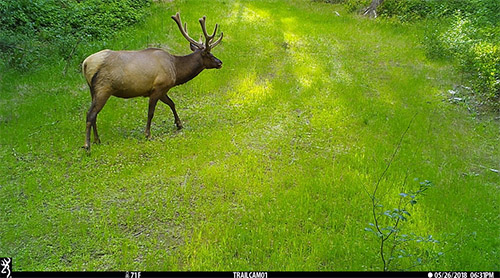
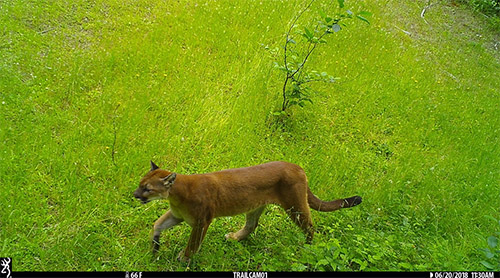
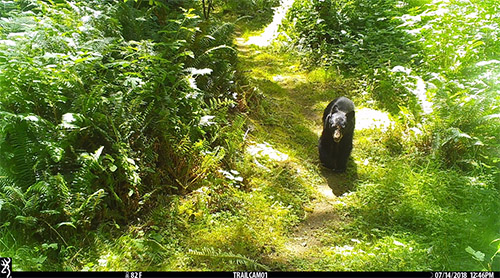 Some of our visitors to Van Eck, caught on camera
Some of our visitors to Van Eck, caught on camera
